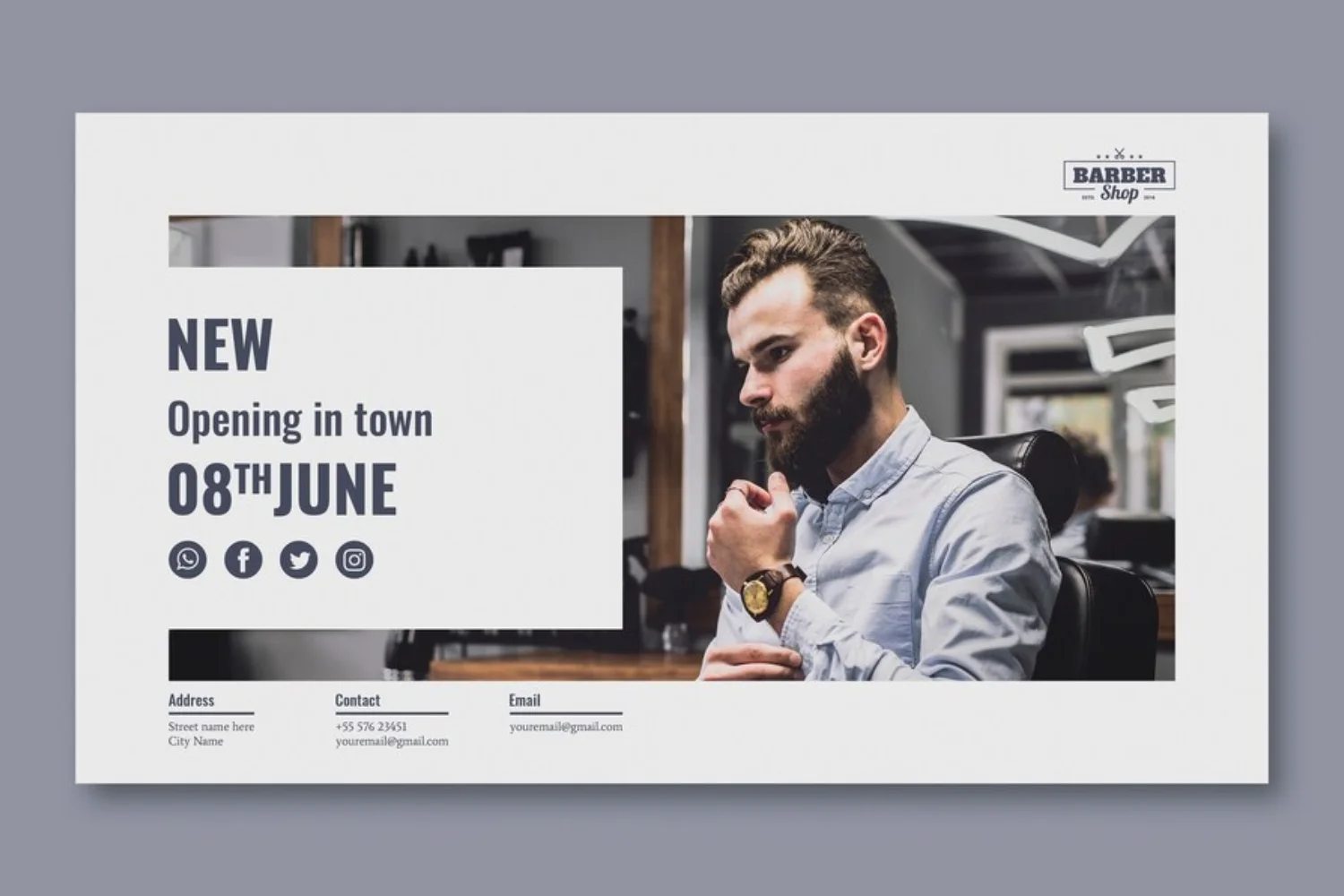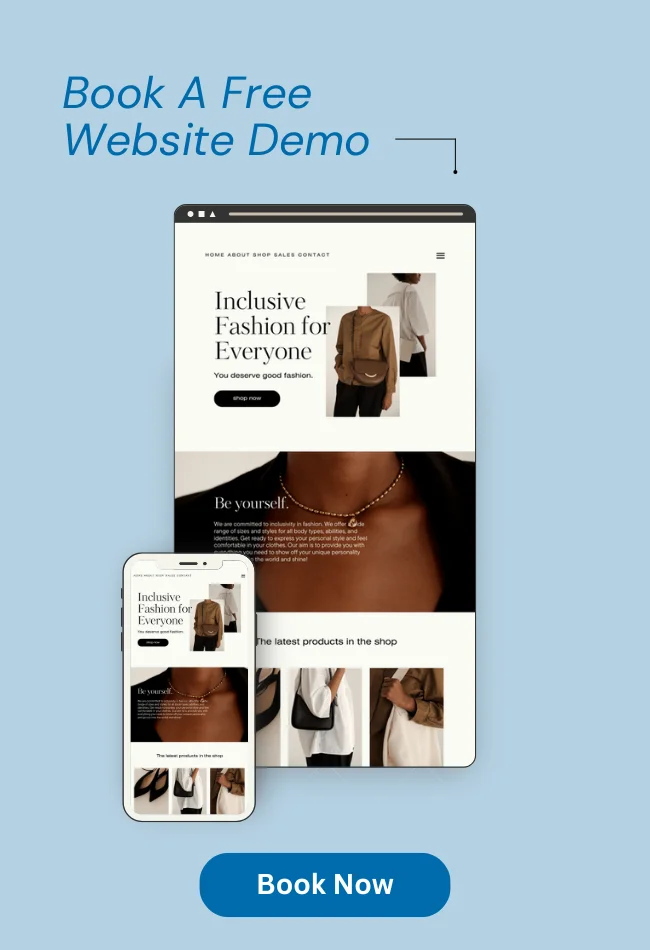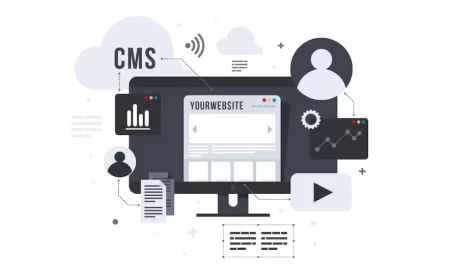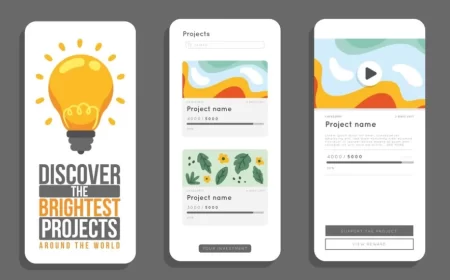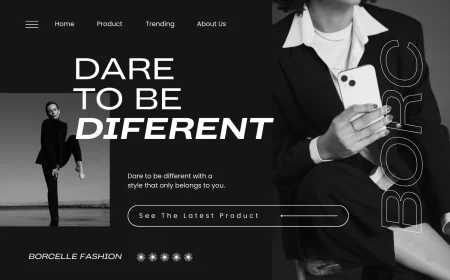In an industry where tradition meets modern style, a barbershop website is the digital equivalent of a perfectly executed fade – sharp, clean, and highly effective. More than just a list of services, a strong online presence for a barbershop is about showcasing craftsmanship, cultivating a unique atmosphere, and providing the ultimate convenience for clients to book their next cut. It’s where the timeless art of barbering meets the demands of today’s digital-savvy clientele, ensuring your chairs are always full and your reputation is always growing.
This comprehensive guide will walk you through the essential elements of creating an impactful barbershop website. We’ll explore why a robust online platform is crucial for attracting new patrons and retaining loyal ones, highlight the must-have features that drive bookings, offer strategic content ideas to capture attention, and outline best practices for design and usability. We’ll also provide inspiring conceptual examples of what makes a barbershop’s website truly stand out, helping you to craft an online presence that is as cool and inviting as your physical shop.
Why Every Barbershop Needs a Powerful Website
The modern man (and increasingly, woman) relies heavily on online resources to find local services. For a barbershop, a powerful website offers distinct advantages:
- 24/7 Online Booking: This is paramount. Clients expect the flexibility to book appointments outside of business hours, reducing phone calls and ensuring your schedule is optimized. This convenience is a major differentiator.
- Showcasing Your Craft: Barbering is a skill and an art. A website provides the ideal canvas to display high-resolution photos of your best cuts, shaves, and styles, allowing potential clients to see your expertise.
- Service Menu & Transparent Pricing: Clearly list all your services (haircuts, beard trims, shaves, treatments) with detailed descriptions and transparent pricing. This helps clients make informed decisions before they even step in the door.
- Attracting New Clients (Local SEO): An optimized website helps your shop appear prominently in local search results (e.g., “barbershop near me,” “men’s haircut [your city]”), driving organic traffic and new client acquisition.
- Building Brand & Atmosphere: Your website can effectively convey your barbershop’s unique vibe – whether it’s classic, modern, edgy, or family-friendly – through design, imagery, and copy.
- Meet the Barbers: Introduce your talented team. Clients often build loyalty with specific barbers, and seeing their faces and specialties online builds trust and rapport.
- Client Testimonials & Reviews: Social proof is powerful. Showcase positive feedback to build credibility and encourage new clients to trust your services.
- Promotions & Announcements: Easily share special offers, seasonal deals, new product lines, or changes in operating hours.
- Reduced Administrative Burden: Online booking and FAQs reduce the number of phone calls for basic inquiries, allowing your barbers to focus on their craft.
Key Features of an Effective Barbershop Website
A successful barbershop website is a combination of visual appeal, practical functionality, and clear, concise information. Here are the essential features:
- Prominent Online Booking System:
- Seamless Integration: Integrate with popular booking software (e.g., Square Appointments, Booksy, Vagaro, Fresha) or a dedicated booking widget.
- User-Friendly Flow: Easy for clients to select services, choose barbers, view availability, and confirm appointments quickly.
- Automated Confirmations: Send email/SMS confirmations and reminders.
- “Book Now” CTA: A highly visible, ideally sticky, call-to-action button on every page.
- Service Menu & Pricing:
- Clear Categories: Organize services logically (e.g., “Haircuts,” “Beard Services,” “Shaves,” “Kids Cuts,” “Packages”).
- Detailed Descriptions: Explain what each service entails (e.g., “Classic Cut: Precision haircut with hot towel neck shave and styling”).
- Transparent Pricing: Clearly state prices or “starting from” prices.
- Barber Portfolio/Gallery (“Cuts & Styles”):
- High-Resolution Photos: Before-and-after photos, diverse haircuts, beard styles, and close-ups of intricate work.
- Categorization: Allow clients to filter by style (e.g., “Fades,” “Classic Styles,” “Long Hair,” “Beard Grooming”) or even by barber.
- Barber Tagging: Tag photos with the barber who performed the work, linking to their individual bio.
- “Meet the Team” / Barber Bios:
- Professional, Approachable Photos: High-quality headshots of each barber.
- Personalized Bios: Short, engaging bios highlighting their specialties, years of experience, unique cutting philosophy, and perhaps a fun fact. This builds rapport and helps clients choose a barber.
- Links to Individual Portfolios/Booking: Allow clients to browse a specific barber’s work or book directly with them.
- Client Testimonials & Reviews:
- Prominent Display: Feature glowing reviews on the homepage or a dedicated “Reviews” page.
- Authenticity: Include client names (first name and initial of last name for privacy) and, if possible, a photo of the client (with permission).
- Integration: Link to or embed reviews from Google My Business, Yelp, or Facebook.
- Contact Information & Location:
- Clear Display: Shop address, phone number, email address, and business hours.
- Embedded Map: A Google Map for easy directions.
- Parking Information: If relevant, mention parking availability.
- Special Offers & Promotions:
- A dedicated section or banner for current discounts (e.g., “First-time client discount,” “Student Tuesdays”), seasonal packages, or product bundles.
- Blog/News Section (Optional but Recommended):
- Grooming Tips: Articles on beard care, styling products, scalp health, or maintaining specific haircuts.
- Shop News: Announcements about new services, product lines, or team members.
- Community Engagement: Posts about local events or partnerships.
- SEO Benefits: Helps attract organic traffic through relevant content.
- Social Media Integration:
- Mobile Responsiveness:
- Crucial: The vast majority of clients will access your website on their smartphones. Ensure it adapts and looks flawless on all devices.
- Search Engine Optimization (SEO):
- Local SEO: Optimize for keywords like “barbershop [your city],” “men’s haircuts [your neighborhood],” “best fade [your town].”
- Fast Loading Times: Optimize images and code for speed.
- Secure (HTTPS): Essential for trust and search rankings.
Content Ideas for Your Barbershop Website
Engaging content is key to converting visitors into loyal patrons:
- Signature Styles Showcase: Highlight unique cuts or beard designs your barbers are known for.
- Product Recommendations: Feature the grooming products you use and sell, explaining their benefits for different hair/beard types.
- “How-To” Guides: Short videos or articles on maintaining a specific haircut, styling a beard, or achieving a classic wet shave at home.
- Shop History/Philosophy: Share the story behind your barbershop, its unique atmosphere, and what sets it apart.
- “Client Spotlight” (with consent): Feature a loyal client with their favorite cut and a short testimonial.
- Gift Card Purchase Option: Allow clients to easily buy digital gift cards.
- Walk-in vs. Appointment Policy: Clearly explain your policy if you accept both.
- Music Playlist: Embed a Spotify or Apple Music playlist of the tunes played in the shop to convey the vibe.
- Career Opportunities: A page for job openings if you’re looking to hire new barbers.
Best Practices for Design & Usability
Your website’s design should reflect the unique character and professionalism of your barbershop.
- Visually Driven: Hair and beard styles are visual. Use large, high-quality images and videos prominently.
- Clean & Masculine/Stylish Aesthetic: Avoid clutter. Use ample white space, a sophisticated color palette (often with classic or modern tones), and legible typography that reflects your shop’s brand.
- Intuitive Navigation: Make it incredibly easy for clients to find services, book appointments, and view portfolios. “Book Now” buttons should be highly visible and consistently placed.
- Fast Loading Times: Optimize all multimedia content. Clients will leave a slow site.
- Mobile-First Design: Design with smartphones in mind first, then scale up for larger screens.
- Strong Branding: Ensure your logo, colors, and overall visual style are consistent with your barbershop’s physical appearance and marketing materials.
- Clear Calls-to-Action: Guide visitors with prominent buttons for booking, viewing services, or exploring portfolios.
- Accessibility: Ensure your website is usable by everyone, including those with disabilities (e.g., good color contrast, alt text for images).
- Regular Updates: Keep your portfolio fresh, update promotions, and add new blog content to show your shop is active and current.
Platforms for Building a Barbershop Website
Several user-friendly platforms are ideal for creating a professional barbershop website:
- Website Builders with Integrated Booking:
- Wix: Offers a user-friendly drag-and-drop interface, a vast selection of beautiful templates (many suitable for services), and its own integrated Wix Bookings system. Excellent for visual appeal and ease of use.
- Squarespace: Known for its stunning, minimalist templates and strong visual capabilities, ideal for showcasing portfolios. Integrates with Squarespace Scheduling (formerly Acuity Scheduling).
- GoDaddy Website Builder: Simple to use, includes built-in appointment scheduling and e-commerce features. Good for quick setup.
- Weebly: Another intuitive drag-and-drop builder, suitable for creating professional sites with integrated booking options.
- Barbershop-Specific Software with Website Features:
- Booksy: A popular platform for barbershops and salons, offering robust online booking, scheduling, POS, and marketing tools, often including a customizable mini-website.
- Vagaro: A comprehensive salon/barbershop management software that includes website builder features, online booking, POS, and marketing tools.
- Fresha: Offers free online booking software that can be embedded into an existing website or used to create a simple booking page.
- Square Appointments: Provides online booking, payment processing, and a customizable booking website as part of its system.
- WordPress (Self-Hosted with Plugins):
- WordPress.org (requires hosting): Offers maximum flexibility and control. You’d use themes designed for barbershops and plugins for booking (e.g., Bookly, Amelia) and galleries. Steeper learning curve but highly scalable.
Conceptual Examples of Effective Barbershop Websites
Here are 30 conceptual examples illustrating different approaches and features you’d find on leading barbershop websites, with external links for inspiration on the type of feature or design element:
Focus on Visual Portfolio & Craftsmanship
- The “Fade Gallery”: A prominent section showcasing various fade styles (low, mid, high, skin) with high-resolution, before-and-after photos.
- Inspiration: Search for “fade haircut before after” on Pinterest.
- The “Beard Artistry Lookbook”: A dedicated portfolio for beard trims and styling, featuring different beard shapes, lengths, and grooming techniques.
- Inspiration: See beard style galleries on men’s grooming sites like Gentleman’s Gazette.
- The “Classic Shave Showcase”: A series of photos or a short video demonstrating the meticulous steps of a traditional hot towel shave, emphasizing the luxurious experience.
- Inspiration: Search for “hot towel shave video” on YouTube.
- The “Barber’s Signature Styles”: Each barber has a small collection of their personal favorite or most requested cuts, highlighting their unique flair.
- Inspiration: Individual artist portfolios on platforms like Behance.
- The “Client Transformation Reel”: A short, dynamic video montage of quick cuts and beard trims, showing the satisfying transformation of clients.
- Inspiration: Short-form video content on TikTok for barbers.
Emphasis on Online Booking & Convenience
- The “Prominent Book Now Button”: A large, clearly visible “Book Now” button in the header or a sticky element, leading directly to the booking system.
- Inspiration: Many service-based websites use this. See general examples on UX design blogs about CTAs.
- The “Express Service Booking Widget”: A small, embeddable widget on the homepage allowing quick selection of a few popular services (e.g., “Haircut,” “Beard Trim”) and immediate booking.
- Inspiration: Embedded booking widgets from platforms like Booksy.
- The “Barber Availability Calendar”: A clear, interactive calendar where clients can see each barber’s schedule at a glance and book directly from there.
- Inspiration: Online scheduling tools like Calendly.
- The “New Client Discount Pop-up”: A subtle pop-up offering a percentage off the first service for new clients, with a direct link to book.
- Inspiration: Marketing pop-up examples from tools like OptinMonster.
- The “Walk-in vs. Appointment Policy”: A dedicated, clear section explaining if walk-ins are accepted, typical wait times, and how to best secure an appointment.
- Inspiration: FAQ sections of busy service businesses.
Building Trust & Brand Identity
- The “Meet the Barbers” with Personality: Each barber’s bio includes a professional photo, their specialties, a fun fact, and perhaps their favorite type of cut to perform.
- Inspiration: “About Us” pages of creative agencies or local businesses.
- The “Client Testimonial Wall”: A dynamic display of positive reviews, potentially featuring quotes and star ratings from Google, Yelp, or Facebook.
- Inspiration: Testimonial sections on service-based business websites. Many Squarespace templates for services feature these.
- The “Shop History & Philosophy”: A beautifully written page detailing the barbershop’s origins, its unique atmosphere, and its commitment to quality and client experience.
- Inspiration: “Our Story” pages of heritage brands or local businesses.
- The “Shop Vibe Gallery”: Photos showcasing the interior of the barbershop, highlighting its decor, seating, and overall atmosphere (e.g., classic, modern, edgy).
- Inspiration: Interior design portfolios or hospitality venue galleries.
- The “Community Connection” Page: If applicable, highlight the barbershop’s involvement in local events, charity work, or partnerships with other local businesses.
- Inspiration: CSR (Corporate Social Responsibility) pages of local businesses.
Informative & Educational Content
- The “Grooming Tips Blog”: A regularly updated blog with articles on topics like “How to Maintain Your Beard,” “Choosing the Right Pomade,” or “Scalp Health for Men.”
- Inspiration: Men’s grooming blogs like Art of Manliness.
- The “Product Showcase”: A page detailing the professional grooming products used and sold at the barbershop, explaining their benefits and how to use them.
- Inspiration: E-commerce product pages with detailed descriptions. See how Dollar Shave Club presents its products.
- The “FAQ for First-Timers”: A comprehensive list of frequently asked questions covering booking, services, what to expect during a shave, and aftercare.
- Inspiration: FAQ sections of service industry websites.
- The “Hair/Beard Style Glossary”: A simple, easy-to-understand glossary of common haircut and beard terms (e.g., “Taper,” “Undercut,” “Balayage Beard”) to educate clients.
- Inspiration: Educational glossaries on fashion or beauty sites.
- The “Gift Card Purchase” Page: A clear and easy process for clients to buy digital or physical gift cards for friends and family.
- Inspiration: Gift card purchase flows on major retail websites. See Amazon Gift Cards.
Design & User Experience Focused
- The “Bold & Masculine Design”: A website with a strong, often dark or rich color palette, bold typography, and clean lines that convey a sense of classic yet modern masculinity.
- Inspiration: Luxury men’s fashion brands or high-end automotive websites.
- The “Responsive Layout for Mobile”: The website is meticulously designed to provide an exceptional experience on smartphones, with large tap targets, optimized images, and easy-to-read text.
- Inspiration: Any well-designed modern mobile website. Test responsiveness with Google’s Mobile-Friendly Test.
- The “Subtle Animation & Transitions”: Use tasteful, subtle animations (e.g., elements fading in on scroll, smooth page transitions) to enhance the user experience without being distracting.
- Inspiration: Modern web design trends showcased on Awwwards.
- The “Embedded Instagram Feed”: A live, scrollable feed of the barbershop’s Instagram posts, showcasing fresh cuts, shop life, and client interactions.
- Inspiration: Many business websites embed social feeds. For a general idea, see how Instagram’s embedded feeds work.
- The “High-Quality Photography Focus”: The website prioritizes large, professional photos of cuts, shop interior, and barbers in action, minimizing text to let visuals tell the story.
- Inspiration: Professional photography portfolios or high-end product showcases.
Unique & Creative Concepts
- The “Shop Playlist Integration”: Embed a Spotify or Apple Music playlist of the music played in the barbershop, allowing clients to experience the ambiance even when not physically present.
- Inspiration: Brand playlists on music streaming services. Many brands create Spotify playlists.
- The “Barber’s Chair Cam” (Concept): A short, high-quality video showing a client’s perspective from the barber’s chair, emphasizing the comfort and experience.
- Inspiration: POV (Point of View) videos on YouTube.
- The “Loyalty Program Overview”: A page clearly explaining the benefits and mechanics of the barbershop’s loyalty or rewards program, encouraging repeat visits.
- Inspiration: Loyalty program pages from retail or hospitality businesses. See Starbucks Rewards.
- The “Online Product Store”: An integrated e-commerce section where clients can purchase the grooming products used and recommended by the barbers.
- Inspiration: Small e-commerce stores built on platforms like Shopify.
- The “Virtual Tour of the Shop”: A 360° virtual tour allowing potential clients to explore the barbershop’s interior, getting a feel for the atmosphere before visiting.
- Inspiration: Virtual tour platforms like Google Street View Trusted.
Conclusion
A meticulously designed and strategically implemented barbershop website is an indispensable asset for any modern grooming business. It extends your shop’s reach beyond its physical walls, offering unparalleled convenience through online booking, showcasing your artistic talent through a stunning portfolio, and building lasting relationships through transparent communication and an inviting brand identity. By investing in a powerful online presence that reflects the quality and style of your services, you can attract new clients, enhance client loyalty, and ensure your barbershop continues to thrive in a competitive digital landscape.
Frequently Asked Questions (FAQs)
Q1: What is the most important feature for a barbershop website?
The most important feature is a prominent and user-friendly online booking system. Clients prioritize convenience, and the ability to book appointments 24/7 directly from your website is crucial for capturing leads and optimizing your schedule.
Q2: Do I need professional photos for my barbershop website?
Absolutely yes. Barbering is a visual craft. High-resolution, professional “before & after” photos of haircuts and beard trims, along with appealing shots of your shop’s interior, are essential to showcase your barbers’ skills and attract new clients.
Q3: Should I include pricing for my services on my website?
Yes, transparency is key. Clearly listing your services with transparent pricing helps clients make informed decisions, reduces phone inquiries, and builds trust.
Q4: How often should I update my barbershop website?
You should update your website regularly. This includes:
- Adding new portfolio photos (weekly/monthly).
- Updating promotions and special offers (seasonally or as needed).
- Posting new blog content (monthly).
- Ensuring your service menu and pricing are always current.
- Updating barber bios as team members join or leave.
Q5: Can a barbershop website help with local SEO?
Yes, significantly. Optimize your site for local keywords (e.g., “barbershop [your city/neighborhood],” “men’s haircuts [your town]”). Ensure your Google My Business profile is linked and consistent. Fast loading times, mobile responsiveness, and a secure (HTTPS) site also contribute to better local search rankings.
Q6: What’s the best way to showcase my barbers’ work?
Create a dedicated Barber Portfolio or Lookbook. Allow clients to filter by barber or style type (e.g., “fades,” “classic cuts,” “beard trims”). Each barber should ideally have their own bio page with links to their specific work and direct booking options. Consider embedding Instagram feeds for fresh content.
Q7: Should I use barbershop-specific software for my website, or a general website builder?
It depends on your needs:
- Barbershop-Specific Software (e.g., Booksy, Vagaro, Square Appointments): Often provides an all-in-one solution with integrated booking, POS, and basic website features. Great for simplicity and seamless management.
- General Website Builders (e.g., Wix, Squarespace): Offer more design flexibility and creative control over your website’s look and feel. You’d then integrate a third-party booking system or use the builder’s native booking features. Choose based on your priority: deep integration vs. design customization.

